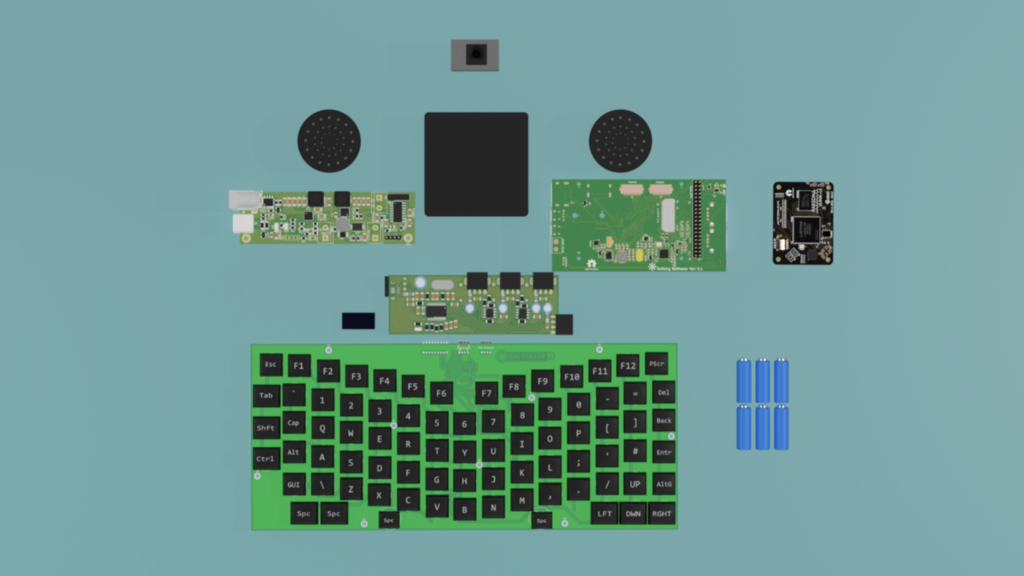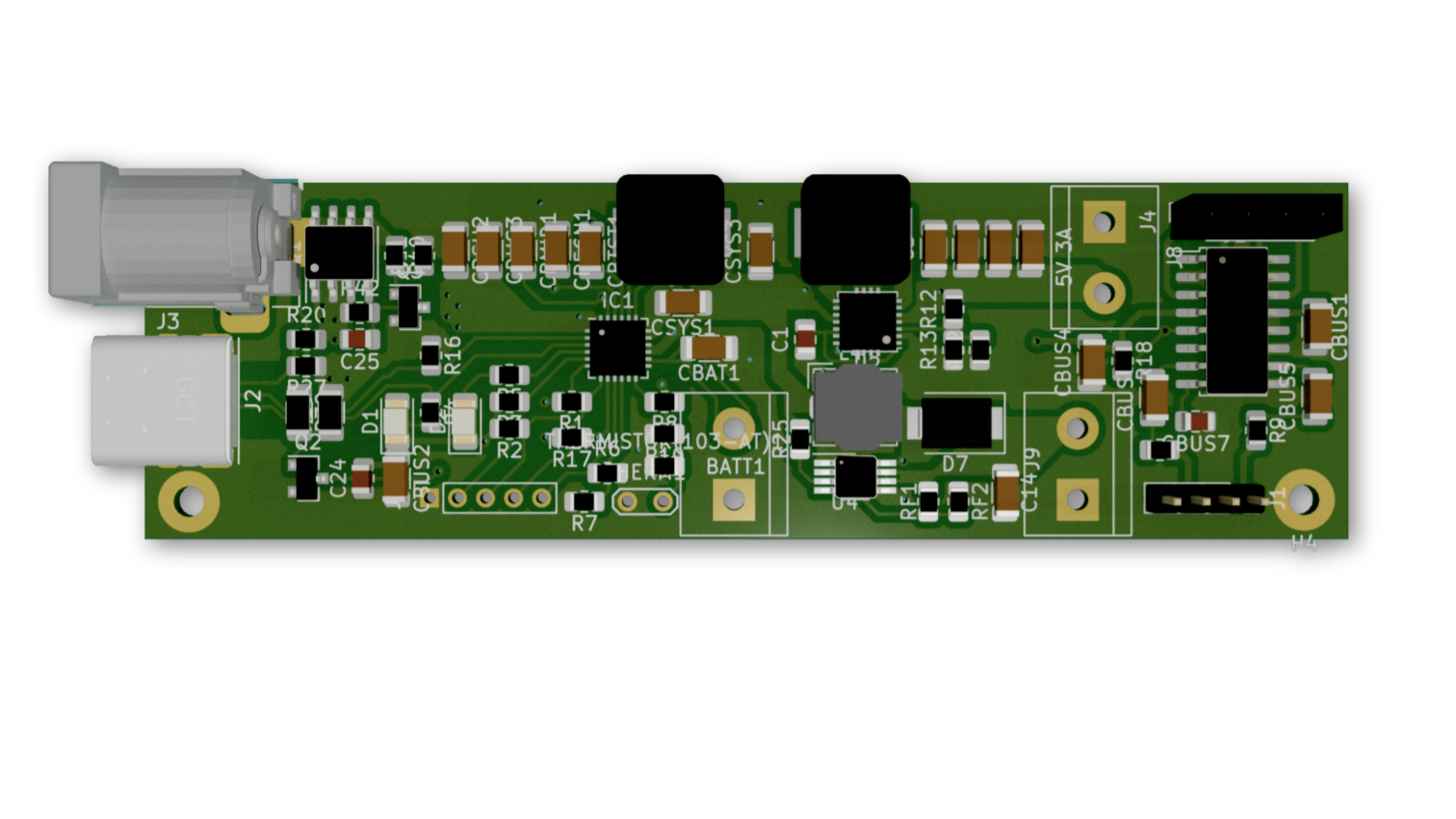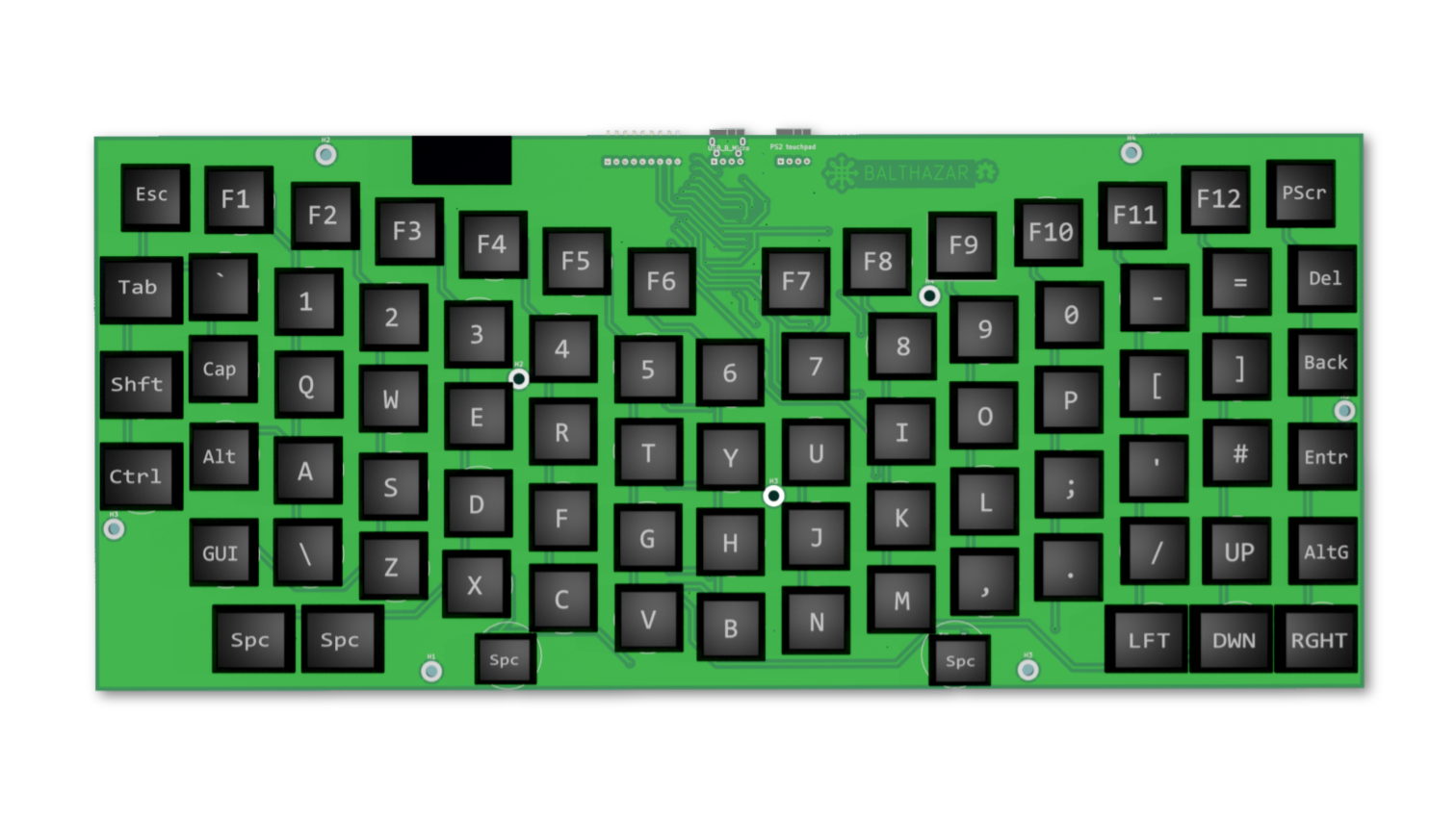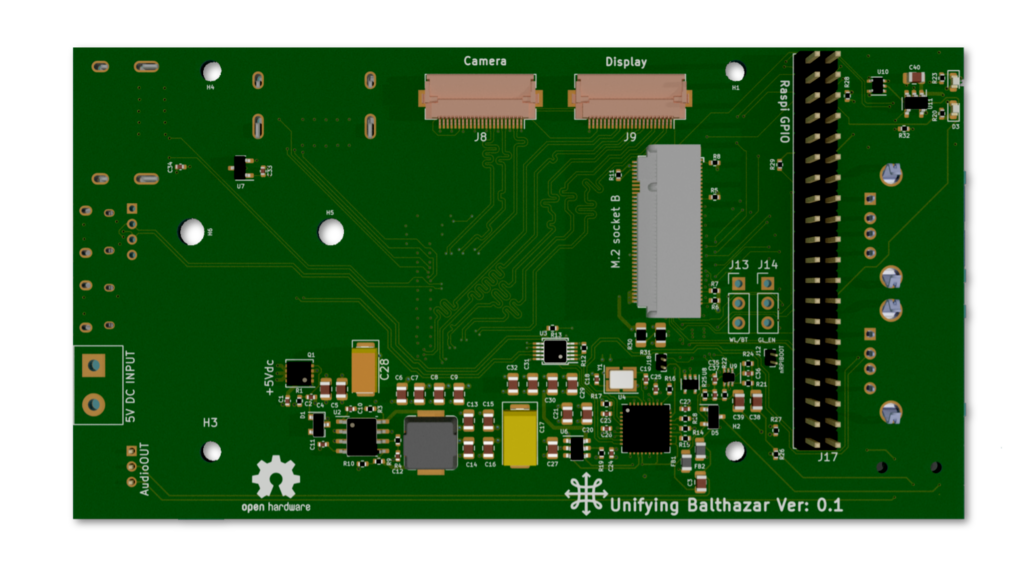Documentation
Contents
Balthazar Modules set
Those are Balthazar's modules and adjoining devices top view. Below is a description of each module.
All PCB modules are to be connected through with the flat and short USB cables of Type-A to a power supply PCB that also charges the batteries and controls the voltage. As it is shown in a video on our Instruction manual page. Power supply would need an external USB-C charger or a 12V wall charger.
Description of the Balthazar modules
1. Module Balthazar PSU is a combined battery charger, buck-boost converter and stereo power amplifier. It also delivers the power to the whole modular system, also via flat USB cable.
Technical description:
Universal power adapter – 12Vdc/5A (60VA Max) – the most usual laptop power connector / either exterior or inserted into chassis skeleton
Input RFI filter
Buck/ boost converter - 5-15V -> 5.1V (which is VSYS voltage on mainboard)
LiPo battery pack single-cell charger -> from SYS voltage 5.1V
Up to a large LiPo battery pack (10000mAh) – single cells / in parallel = 3.6V – three-terminal connector (-Vbat=gnd, thermistor NTC_TS, +Vbat=3.6V)
Options: charge to/from/use external 5V battery pack (USB-A and/or USB-C connectors), solar panel charger.
VSYS voltage is the main motherboard voltage line – use appropriate buck or boost converters on all separate functional modules (CPU, graphics, ram, etc.)
2. Module Balthazar Keyboard is a simplified, a bit ergonomic computer keyboard with DIY approach. In the two versions. The second iteration of the updated keyboard is to have some more geometric consistency.
Description:
The computer keyboard system with microcontroller (for now an 8-bit Atmel built into a small Sparkfun ProMicro board) A normal ISO keyboard layout is used. An option is given to test the ability of the microcontroller to handle also the control for the PSU board and the touchpad module data transfer to USB. Keypad and touchpad user activities are usually mutually exclusive – so this seems ok. Charger control is active a couple of seconds on startup of the system, so this is also ok. In case of some charger error, there is a mechanical switch on the PSU board to stop charging. In this way, three functions would be fulfilled in a single microcontroller – connected to the system with one USB. On the keyboard, there is also I2C to which the small screen and touchpad are connected to.
3. Module Balthazar IO is a simple USB2.0 four-port hub for the internal devices: keyboard and touchpad (optional trackpad), webcam and optional audio card. This is for an internal connection only and if the user wants to use a variant of some other ARM based systems, such as Raspberry Pi 4, or something compatible. End user will also have to disconnect and take out Unifying board, as that place is envisaged for such additional system.
Description:
The GL850G (ssop28-pin) four-port USB 2.0 hub chip with additional two pieces of AIC1526-0 dual USB high-side switch – to switch-off/on manually. It is a well-proven design. Hub will be powered via the upstream port – connected to the mini-computer board. Internal USB periphery power demands are predictable = low, so the usual 500mA limit for the hub is ok. The keyboard + touchpad combination is USB1.1 protocol, web cam, and optional audio card are USB2.0.
4. Module Unifying PCB is a single PCB solution for connecting the three previously designed Balthazar modules I/O, power supply, USB 2.0, 3.0 controllers, keyboard and adding Compute Module compatible FPGA boards. Aimed at setting a compatibility standard to widely accepted hardware standards.
Description:
Single PCB solution for connecting the three previously designed Balthazar modules (I/O, power supply, USB 2.0, 3.0 controllers, keyboard and adding Compute Module compatible FPGA boards. Aimed at setting a compatibility standard to widely accepted hardware standards. It has standardized 100 pin accomodating module for adding standard CM HAT modules based on ARM or FPGA It has GPIO expansion port, HDMI,2x USB 3.0, Ethernet RJ45 and a microSD card slot.
Production process
This is the production process of each module as those progresses. iBoM for each module is in the respective folder on our Github page.
Production start and a process with a PCB module of the keyboard, Power Supply Unit I/O and Unifying Board is shown below. For the keyboard module, an interactive iBoM (interactive Bill of materials) is created, so one can use it in KiCad program for an easy overview and assembly.
Balthazar Keyboard, PSU I/O and Unifying PCB can be found on our Github page.
We used Kitspace to align the iBoM and see all the elements that we need for the production of our modules. Of course there will be issues with PCBs, also with obtaining elements for small orders and series, but updated designs are due and are updated on our GitHub pages.
Balthazar Keyboard
Keyboard production images, to encourage and visualise building process.
Video of Balthazar Keyboard production. Shown elements are traced and soldered.
Issues can be found on our Github page -> here.
Unifying board
Video of assembling the Balthazar Unifying Board.
Issues can be found on our Github page -> here.
PSU I/O board
Images of PSU board and a process of building those.
Video of building process of PSU I/O board. Elements highlighting and soldering.
Issues can be found on our Github page -> here.
Battery
Battery currently tested is Samsung 4800 mAh. Here we test it with our Power Supply Unit. A bit more info on a current battery choice is on our Specifications page.
Here we have 4 a bit stronger and more durable battery pack that we will test for a future usage. In a prototype version we will try to use both of the packs and those are yet to be tested with our Power Supply Unit.
A D-i-Y Case
A proper dimensions and a set up with battery and modules incorporated into the casing. Test printing the case elements and internal settings. A seam printing mode is tested.
Production Case
Our production casing more fit for a commercial usage. Currently the case goes through the fine tuning, expected to be ready around the mid-December.All production files will be updated as they come in on our GitHub page.




























